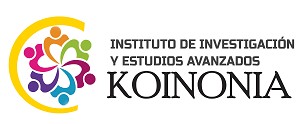Measuring anxiety among young English language learners: Application of digital games for evaluation
Resumen
The purpose of the following study was to evaluate how the impact of technology affects the anxiety of elementary school students in English classes in a private school in Cuenca, Ecuador. Through a mixed method approach using the Beck Anxiety Inventory (BAI). Results showed that students experienced a statistically significant decrease in anxiety after being assessed through Quizizz games compared to traditional pencil-and-paper assessments. It was also found that students' anxieties regarding assessments were primarily triggered by fear of consequences, failure, and not achieving perfect scores. Further research over longer periods is recommended.
Descargas
Citas
Amy, T., & Anastasia, K. (2016) Foreign language anxiety in Turkey: the role of multilingualism. Journal of Multilingual and Multicultural Development, 37(2), 115-130. https://doi.org/10.1080/01434632.2015.1031136
Anwar, G., & Abdullah, N. (2021). Inspiring future entrepreneurs: The effect of experiential learning on the. International Journal of English Literature and Social Sciences, 6(2), 183-194. doi: dx.doi.org/10.22161/ijels.62.26
Ayres, R. (2002). Learner attitudes toward the use of CALL. Computer Assisted Language Learning. COMPUT ASSIST LANG LEARN, 241-249.
Beck, A. T., Epstein, N., Brown, G., & Steer, R. A. (1988). An inventory for measuring clinical anxiety: psychometric properties. Journal of Consulting and Clinical Psychology, 56, 893–897.
Dehghanzadeh, H., Fardanesh, H., Hatami, J., Talaee, E., & Noroozi, O. (2019). Using gamification to support learning English as a second language: a systematic review. Computer Assisted Language Learning, 34(7), 934-957. doi:10.1080/09588221.2019.1648298
Doane, D. P. (2021). Applied Statistics in Business & Economics (7th ed.). New York: McGraw Hill.
Donaldson, S. G. (2002). Strategies for managing evaluation anxiety: Toward a psychology of program evaluation. American Journal of Evaluation, 23(3), 261-273.
Dornyei, Z. (2009). Motivation in second and foreign language learning. Cambridge University Press.
Dörnyei, Z., & Ushioda, E. (2006). Motivation, Language Identity and the L2 Self. Bristol: Blue Ridge Summit: Multilingual Matters. doi: 10.21832/9781847691293
Horwitz, E., Horwitz, M., & Cope, J. (1986). Foreign Language Classroom Anxiety. The Modern Language Journal.
Kagan, S. (1994). Cooperative Learning. Denmark: Kagan Publishing.
Krashen, S. (1982). Principles and Practice in Second Language Acquisition. California: Pergamon Press Inc.
Krashen, S. (1985). The Input Hypotesis. Issues and Implications. Longan Group.
Leary, M. (1996). Self-presentation impression management and interpersonal behaviour. Oxford: Westview Press.
Leitenberg, H. (1990). Handbook of Socal and Evaluatio Anxiety. New York: Plenum Press.
Lou, H. (2012). . Sources of foreign language anxiety: Towards a four-dimension model. Contemporary Foreing languages Studies, 12, 49-61.
Mahmoodzadeh, M. (2013). Investigating foreign language anxiety in Iranian classroom: The effect of gender. International Journal of Research Studies in Language Learning, 2(1), 61-70.
McDonald, J. (2014). Handbook of Biological Statistics. Baltimore: Sparky House Publishing.
Pitoyo, M., Sumardi, & Asib, A. (2019). Gamification Based Assessment: A Test Anxiety Reduction through GAme Elements in Quizz Platform. International Online Journal of Education and Teaching, 6(3), 456-471.
Reichenberger, J., Smyth, J., & Blechert, J. (2018). Fear of evaluation unpacked: day-to-day correlates. Anxiety, stress, & coping, 31(2), 159-174.
Vandercruysse, S., Vandewaetere, M., & Clarebout, G. (2012). Game-based learning: A Review on the effectiveness of educational games. Handbook of Research on Serious Games as Educational, Business, and Research Tools, 628-647.
Watson, D., & Friend, R. (1969). Measurement of social-evaluative anxiety. Journal of Consulting and Clinical Psychology, 33(4), 448-457. doi:https://doi.org/10.1037/h0027806
Wong, Q., McEvoy, P., & Rapee, R. (2020a). The structure of social-evaluative threat detection in social anxiety disorder. Journal of Anxiety Disorders, 74. doi:10.1016/j.janxdis.2020.102273
Wong, R. (2020). Role of gamification in classroom teaching: Pre-service teachers' view. International Journal of Evaluation and Research in Education, 9(3), 684. doi:10.11591/ijere.v9i3.20622
Young, D. (1991). Creating a Low-Anxiety Classroom Environment: What Does Language Anxiety Research Suggest? The Modern Language Journal, 75(4), 426-437. doi: https://doi.org/10.1111/j.1540-4781.1991.tb05378.x
Derechos de autor 2022 María Paulina Amoroso-Vivanco, Melita Vanessa Vega-Auquilla

Esta obra está bajo licencia internacional Creative Commons Reconocimiento-NoComercial-CompartirIgual 4.0.
CC BY-NC-SA : Esta licencia permite a los reutilizadores distribuir, remezclar, adaptar y construir sobre el material en cualquier medio o formato solo con fines no comerciales, y solo siempre y cuando se dé la atribución al creador. Si remezcla, adapta o construye sobre el material, debe licenciar el material modificado bajo términos idénticos.
OAI-PMH URL: https://cienciamatriarevista.org.ve/index.php/cm/oai














